This post may contain affiliate links. Read my disclosure policy.
This savory Thai Peanut Sauce recipe is a quick and easy way to incredible Asian flavor to grilled meats, noodles, salads, veggies, and more. And you might even have all the ingredients in your pantry and fridge right now. It takes just minutes to prepare a smooth and rich satay sauce that can easily be made gluten free, vegan, and low carb.
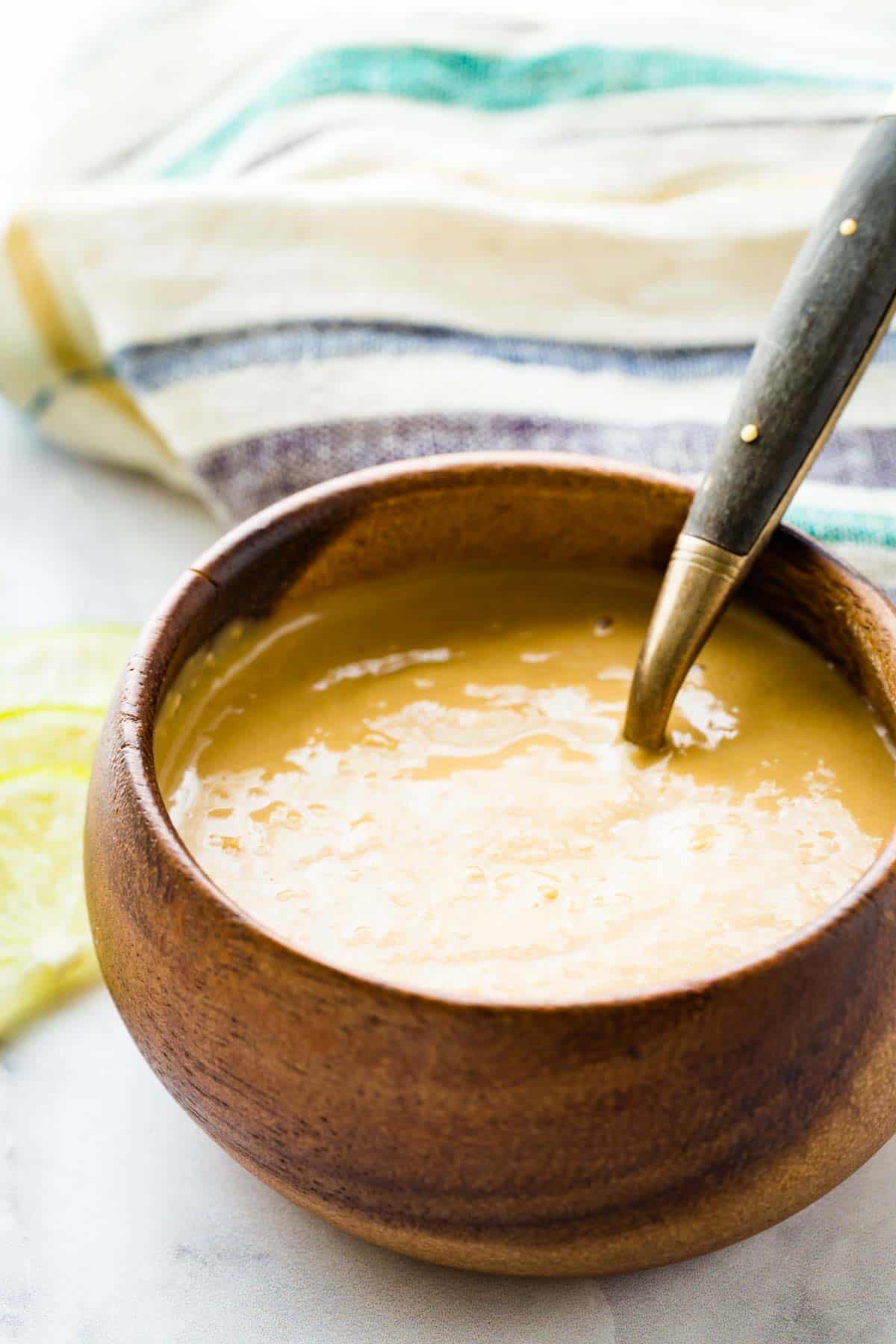
Thai Peanut Sauce
I know that it has been years now since we moved to Maryland from New Jersey, but I still miss my favorite Thai restaurant. It was a small place just down the street from us and it was so good that I have not found another place like it.
One of the things I loved was chicken satay. And it wasn’t just the deliciously marinated and grilled chicken. It was the satay sauce. A rich, smooth peanut sauce that exploded with flavor.
I loved it so much that I had to start making my own to just slather on everything. Especially since many store-bought Asian sauces like peanut sauce and Teriyaki sauce aren’t gluten free.
This simple peanut sauce makes everything taste better. Eight simple but flavor-packed ingredients come together into a smooth, creamy mixture that you can use to dip, drizzle, or dress everything from meats and seafood to veggies and salads, and even your favorite Asian-inspired appetizers.
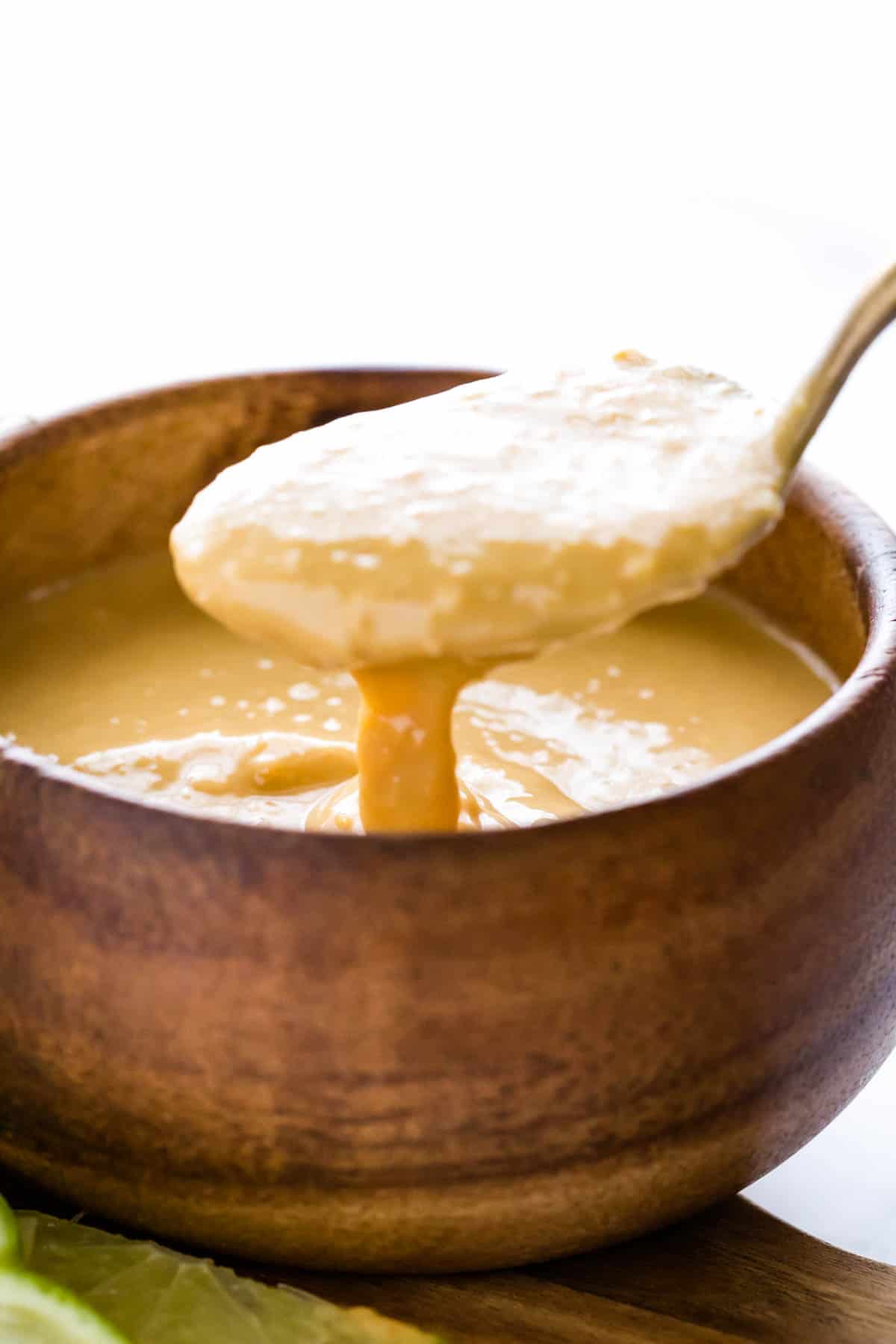
Why it is so good?
It has the perfect balance of the four key elements of good cooking:
- Salt – soy sauce adds the pungent, salty bite that especially enhances the peanut flavors.
- Fat – mainly from the peanut butter but also from a little oil, fat makes this sauce velvety and rich and unctuous as it coats your tongue and mouth.
- Acid – fresh lime juice and rice vinegar helps balance out the richness of the fat.
- Heat – of course, the spice level is always a matter of taste. But a little kick goes a long way in rounding out the deliciousness.
Blend together eight ingredients that bring those four elements into perfect harmony and you have a sauce, dip, dressing, drizzle, or whatever else you want to use it for. This easy Thai peanut sauce recipe can take even the simplest meats or veggies and bring them to another level.
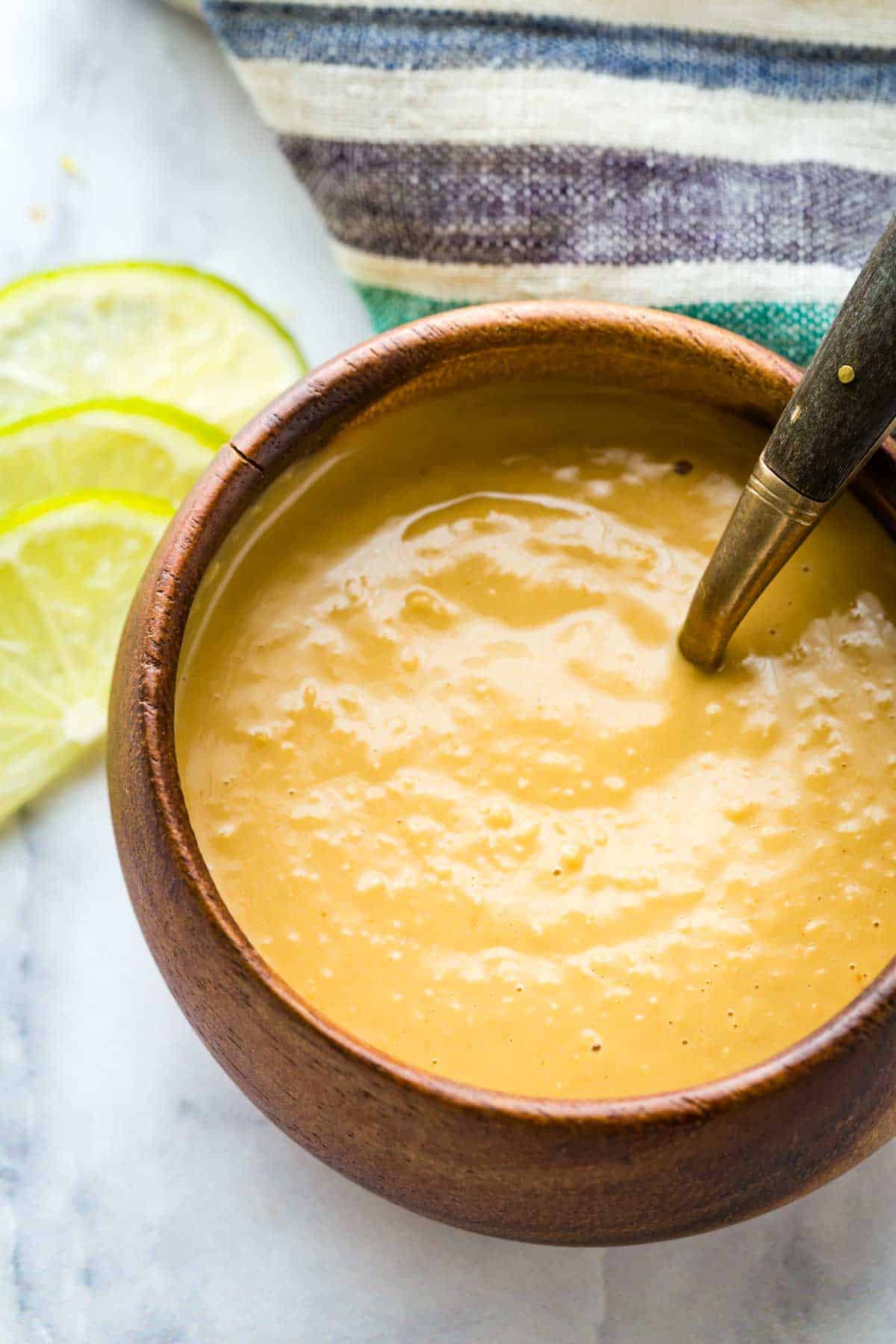
Asian Peanut Sauce Ingredients
As mentioned, it’s a relatively short list of ingredients you’ll need to pack a huge punch. Many of them are common pantry ingredients, though fresh lime, ginger, and garlic do make a huge different in the flavor. Here’s a quick list of what you’ll need, but make sure to scroll to the recipe card for the full ingredients and instructions.
- Peanut butter – it is best to use natural peanut butter that has just peanuts and maybe salt as ingredients. I use the Kirkland brand from Costco.
- Soy sauce or tamari – be sure to use gluten free, if needed. You can also use coconut aminos, but since it does not have as strong or salty of a flavor, you may need to add salt.
- Coconut oil – if your coconut oil is solid, it will melt in the blender. A neutral oil like avocado oil or vegetable oil can also be used.
- Rice vinegar – be sure to use unseasoned rice vinegar, especially if you are gluten free.
- Hot sauce – I like sriracha, but another hot sauce or Thai chili sauce will work.
- Juice of a lime
- Fresh ginger – cut off about a two-inch piece of ginger root, scrape off the skin with the edge of a spoon, and cut it into chunks.
- Garlic
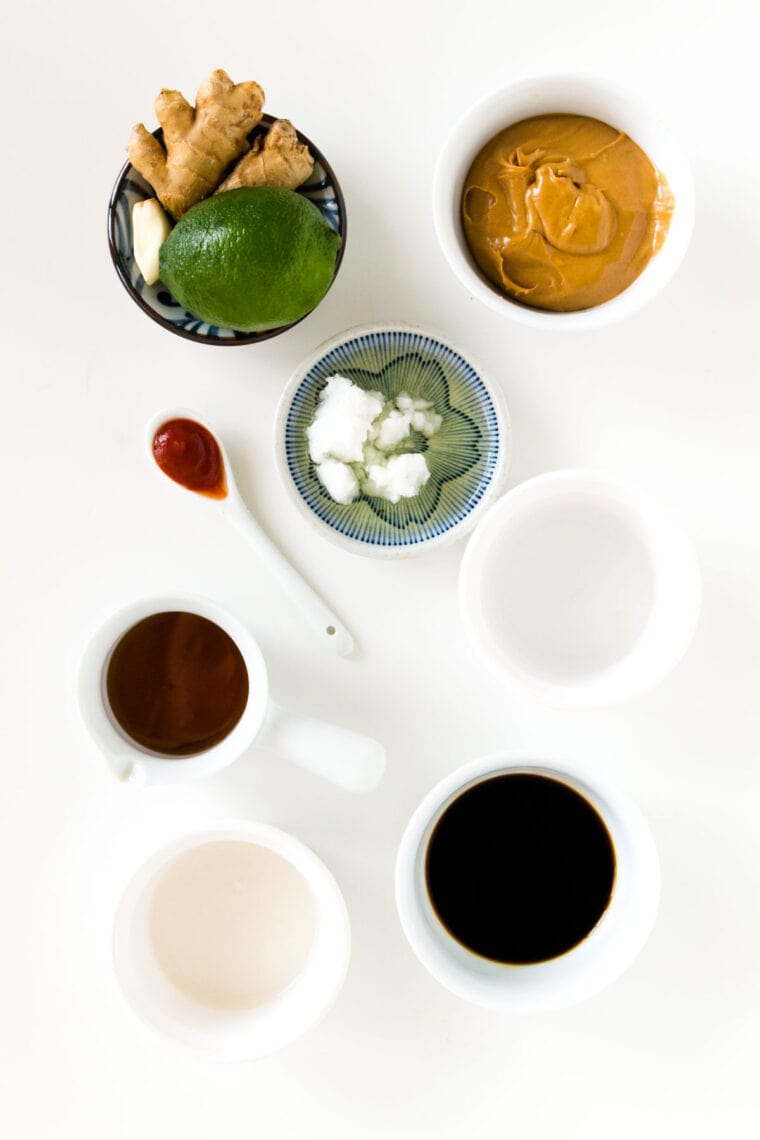
Is peanut sauce sweet?
Many recipes also call for honey or maple syrup to add a bit of sweetness. I prefer more of a savory peanut butter sauce, so I have always left it out, which actually makes this a keto-friendly version. But you can add a tablespoon or two, to taste.
How to Make Peanut Sauce
It really doesn’t take much to prepare peanut sauce. Combine the ingredients in a blender or mini food processor and blend until smooth, adding 2 or 3 Tablespoons of water to achieve your desired consistency for drizzling. You can also combine everything in a bowl or jar and use a hand blender.
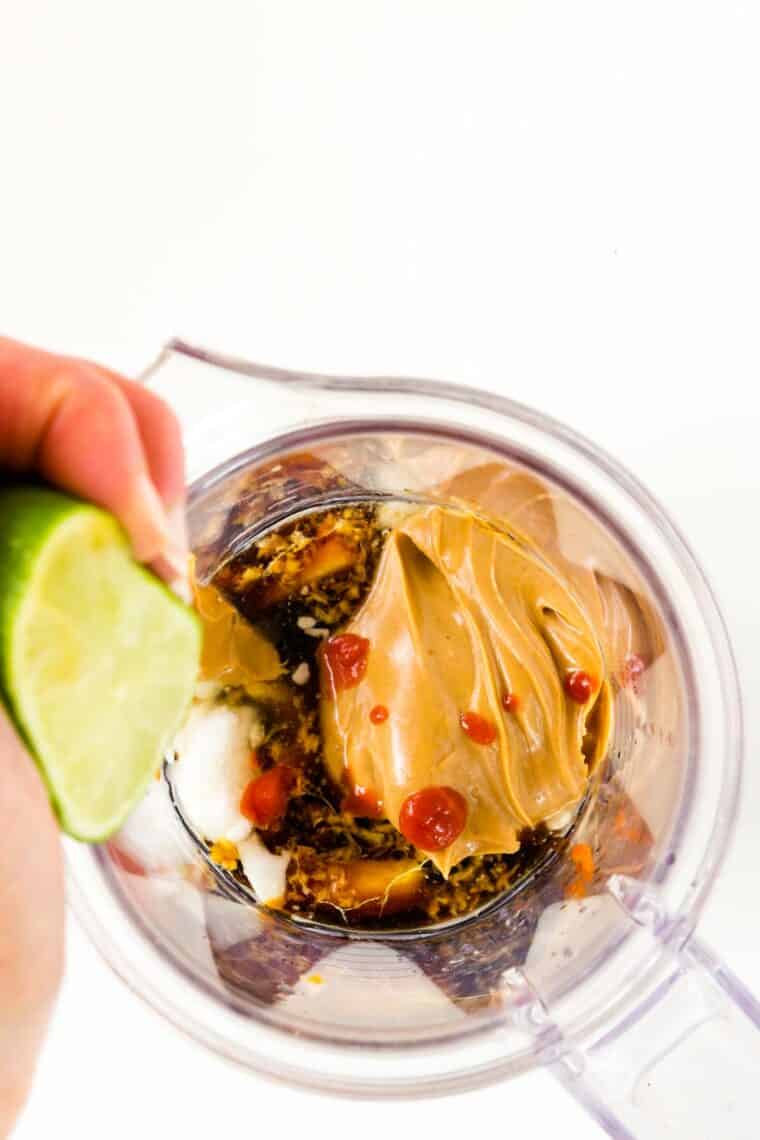

Variations for Special Diets
- Gluten free – be sure to use gluten free soy sauce, like the one from Kikkoman, or tamari and unseasoned rice vinegar
- Vegan – make as is. If you prefer to add some sweetness, use maple syrup or brown sugar
- Keto/Low Carb – make as per this recipe, which already excludes sweetener. If you prefer some sweetness, use Swerve Brown Sugar Replacement.
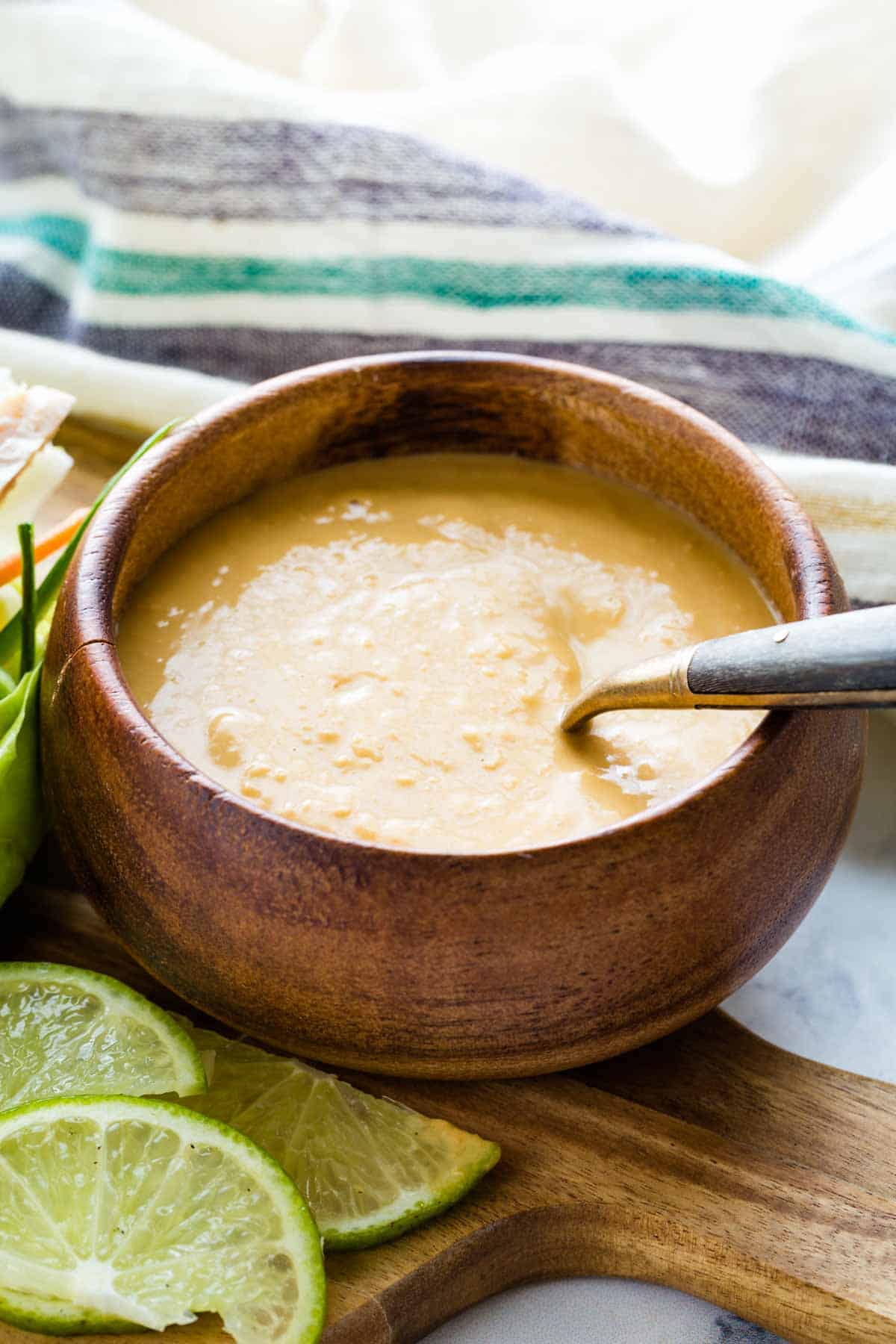
Storing Peanut Sauce
You can store peanut sauce in an airtight container in the refrigerator for up to a week. Bring it to room temperature, and if you need to thin it out, stir in a little more water, or even some rice vinegar or lime juice if you want to punch up the flavors.
You can also heat it slowly and carefully in the microwave or in a pot on the stove. But be careful not to bring it to a boil or it can take on a grainy texture.

What to Serve With Peanut Sauce
The traditional way to serve satay sauce is with Thai skewers. Even though chicken satay if the most common, you’ll also find skewers of beef, shrimp, and even tofu. And it’s also amazing on Thai Larb Chicken Lettuce Wraps. But there are so many other foods that are even more delicious when drizzled with or dipped in this easy Thai peanut sauce:
- Create your own rice bowls with white, brown, or cauli rice topped with Asian Grilled Chicken or Kung Pao Cauliflower.
- Use it as a dip for appetizers like Shrimp Summer Rolls or Vegetable Pancakes, or even just with fresh veggies for dipping.
- Give your greens a lift, whether that’s Asian Beef Lettuce Wraps or Banh Mi Salad.
- Drizzle it over weeknight meals like Egg Roll Bowls or Gluten Free Beef Stir Fry.
- Serve it as a sauce for Thai-Style Sliders or Thai-Style Ribs.
- Toss with pasta or zucchini noodles to make Sesame Noodles or Sesame Zoodles

Get the Right Ingredients
If you need to make gluten free peanut sauce, make sure to get gluten free soy sauce or tamari, or coconut aminos. And be sure your rice vinegar is gluten free too. At the time of writing this post, these are some brands I use. But things often change, so always be sure to check updated labels and information from the manufacturer.

Thai Peanut Sauce
Ingredients
- 1/3 cup peanut butter
- 2 Tablespoons soy sauce or tamari
- 2 Tablespoons coconut oil
- 1 Tablespoon rice vinegar
- 1-2 teaspoons hot sauce such as sriracha
- Juice of a lime
- 2 inch knob of fresh ginger
- one clove garlic
- 2 Tablespoons water , add another 1/2-1 Tablespoon if needed to achieve desired thickness
- honey or maple syrup , optional if you want a little sweetness. Try 1-2 Tablespoons.
Instructions
- Combine the ingredients in a blender or mini food processor and blend until smooth, adding 2 or 3 Tablespoons of water to achieve your desired consistency for dipping or drizzling. You can also combine everything in a bowl or jar and use a hand blender to puree the mixture.
- Serve over meat, roasted veggies, salad, rice, or noodles, or use it for dipping spring rolls, satay, dumplings, or vegetables.










